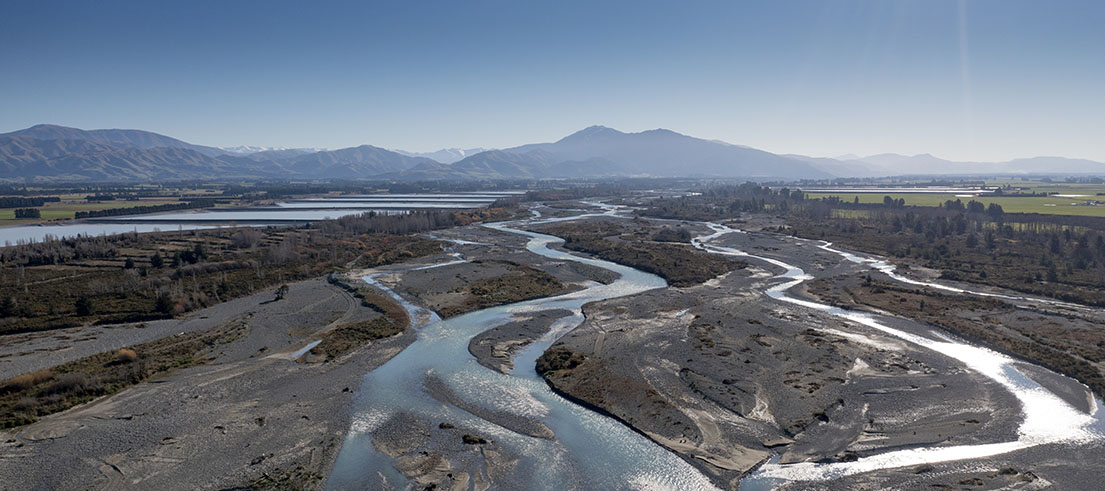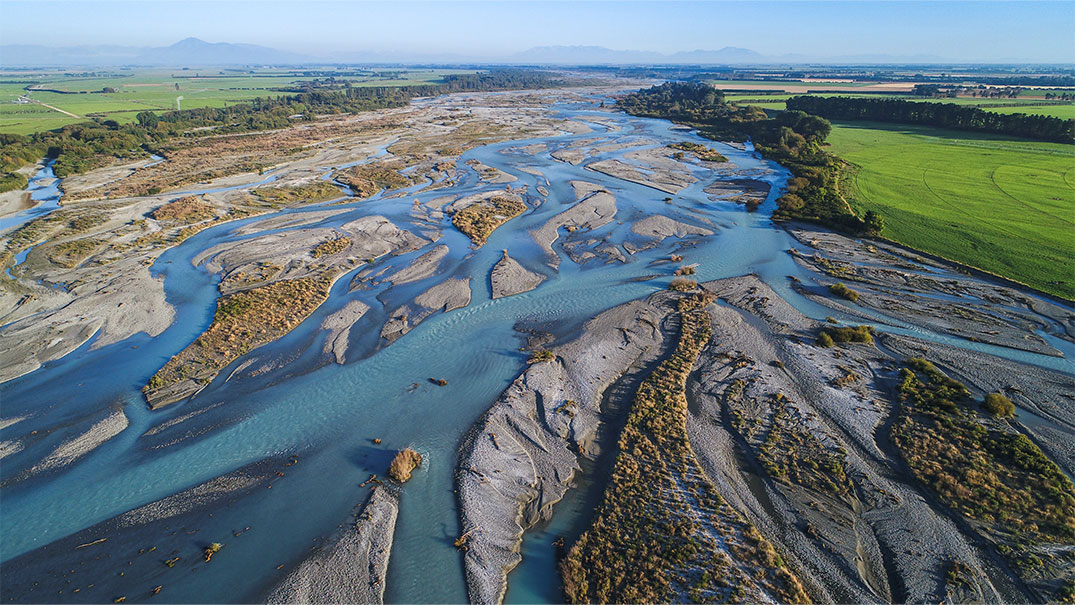
Protecting Waitaha Canterbury rivers from invasive weeds
Weed control is critical when it comes to keeping our communities safe from flood risks, and it also plays an important role in protecting biodiversity in our region’s precious land and waterways.
Healthy waterways are central to a thriving environment. They connect communities ki uta ki tai/from the mountains to the sea, provide a rich ecosystem for native animals and plants, and support agriculture and local economies.
However, our waterways are vulnerable to infestations of exotic pest plant species that can choke braided rivers and restrict the natural functions of waterways with serious consequences.
Weed control supports flood resilience
We manage 58 river rating and drainage districts in Canterbury, and each rating district has an agreed level of service for community flood protection. Left unchecked, invasive weeds in these areas are a significant flood risk, said rivers manager David Aires.
"Heavily weed-infested riverbeds reduce flow capacity in a flood event, which increases the likelihood of erosion and out-of-river flooding," David said.
"If this happens, typically the only resolution is mechanical intervention using diggers, which can be more intrusive to the river environment and very expensive for local ratepayers. Regular spraying can help avoid this."
Biodiversity protection
Weeds not only increase our risk of flood events. They are also a major threat to biodiversity and prevent the river system from naturally braiding, said Environment Canterbury Principal Biodiversity Advisor Frances Schmechel.
"Weed infestations provide cover for predators and can cause the loss of habitats, including some of our iconic native braided river birds which need clear gravels to nest and raise their chicks," she said.
The diversity of aquatic habitats is also impacted, potentially reducing the variety of native and sports fish that occupy our rivers.
According to the Department of Conservation (DOC), weeds can carry diseases, alter the soil pH and use more water than native plant species. “Weeds can displace native plant species and cause irreversible changes to native ecosystems,” said DOC Science Advisor Kate McAlpine.
How we control weeds
We use other methods, including diggers and hand clearance where it is practical, however, the large areas we manage mean herbicide is most often the best option for controlling vegetation across Canterbury’s waterways.
We work hard to do this in an effective and safe way by following strict protocols.
Glyphosate is widely used in New Zealand and other countries as a general-purpose herbicide, and it is considered safe by the regulator – the New Zealand Environmental Protection Authority (EPA).
When using glyphosate, we follow the rules set by the Environmental Protection Agency (EPA), the conditions of Resource Consent CRC981580 and our own best practice Spray Handbook.
You can read the EPA’s statement on glyphosate, and download a fact sheet and information about how glyphosate is regulated in New Zealand on the EPA website.
David said longer term, the council is looking at trialing lower concentrations and different mixes to reduce herbicide use, as well as investigating the feasibility of other options.
Collaborative region-wide effort
Controlling weeds around riverbeds is a big task and Environment Canterbury undertakes this work alongside other government agencies, key stakeholders and community groups.
Weeds and pests don’t recognise boundaries said Tracey Burton, Manager of Biosecurity and Biodiversity at Toitū Te Whenua Land Information New Zealand (LINZ).
"As stewards of the significant lands and waterways we manage throughout the region, LINZ works alongside our partners and local communities to make sure our control efforts are as effective as possible," she said.
"It’s vital biosecurity control efforts are coordinated across our complex ecosystems. We work collaboratively with partners to enhance our programme and achieve better outcomes for the environment."
Current weed control
For more information about current weed control and river projects, visit our current works page.

